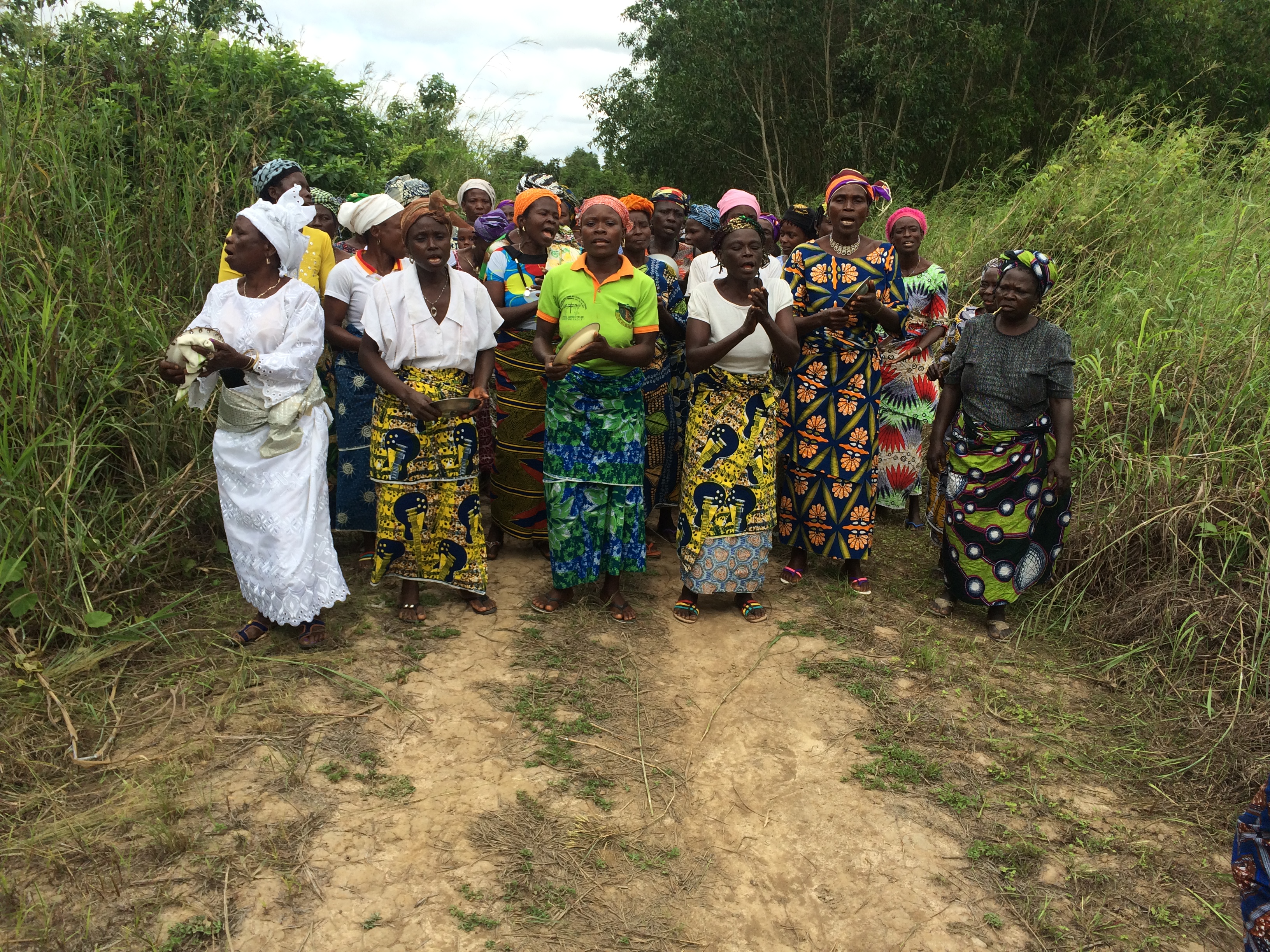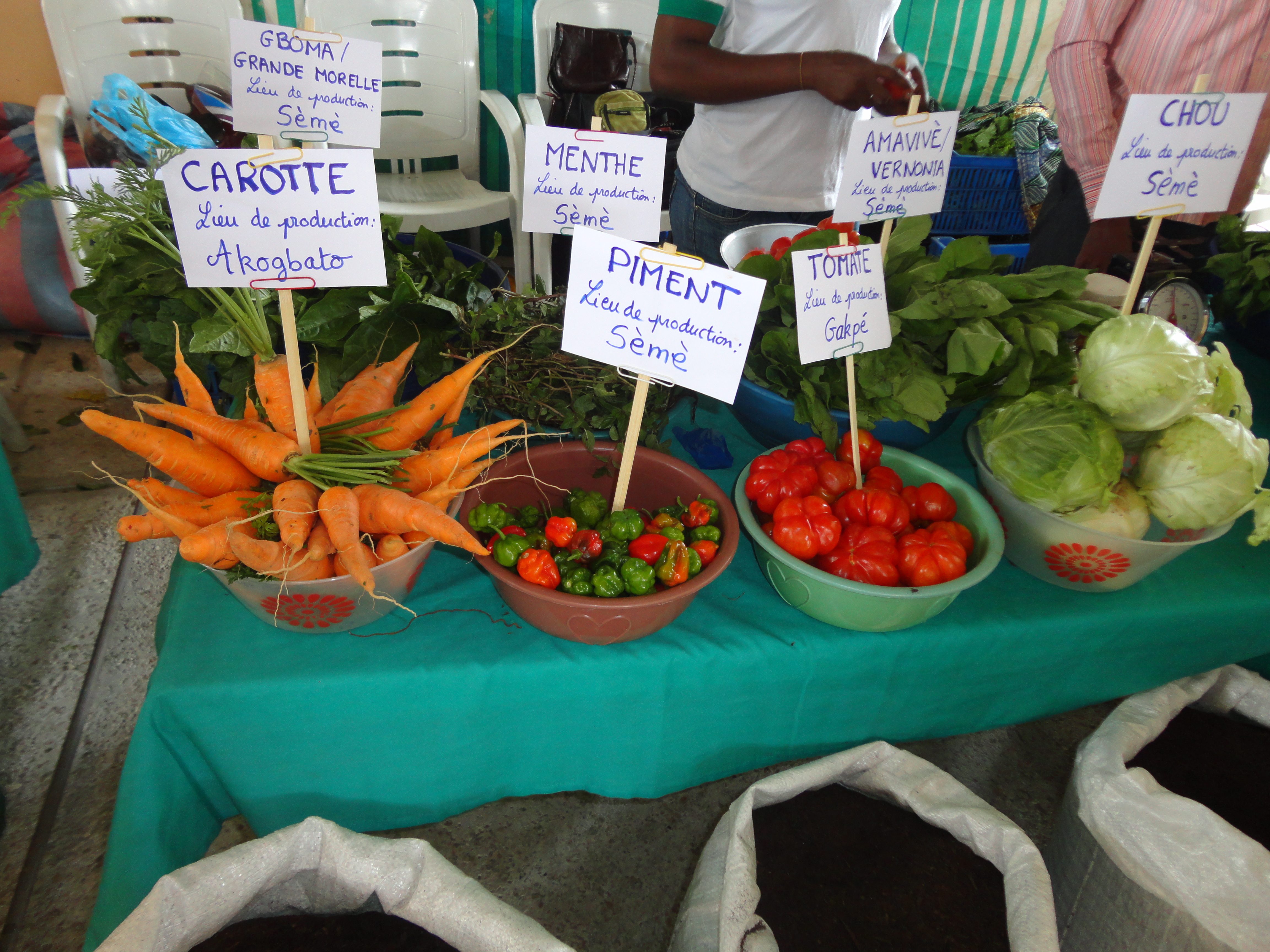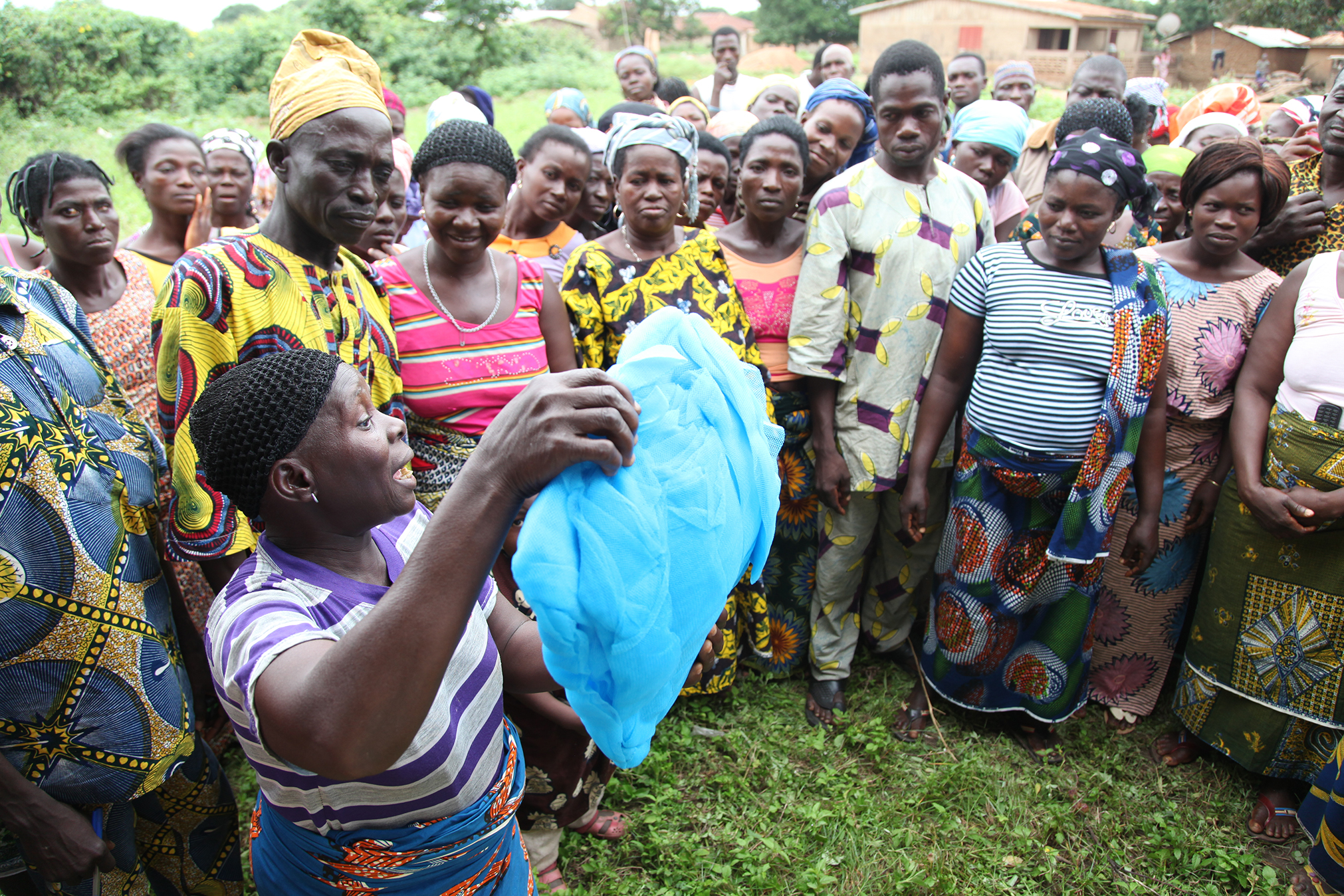Combating Adverse Effects of Climate Change on Agricultural Production and Food Security in Benin
Combating Adverse Effects of Climate Change on Agricultural Production and Food Security in Benin
For a long time, farming communities in Benin have had to develop weather and climate hazards mitigation techniques or practices so-called "endogenous" including crop diversification, irrigation, risk management disaster, etc. However, human induced climate change that has become a reality (IPCC, 2007), is posing new risks for these communities. Agricultural modernization that does not destroy the social and ecological balances yet ensures food security for the peasant mass has remained the biggest problem in Africa since the 60s.
This need, which is fundamentally based on the training and capacity building, requires major technical and technological progress.
To meet these needs, research and development services in Benin have collaborated with other structures of the Ministry in charge of agriculture, and have developed specific technologies adapted to different climatic conditions. Among others, there are shorter cycle varieties that can better withstand drought. Factors such as poverty and the commitment of producers to local practices added to low popularization of technologies developed and lack of capacity building of stakeholders, limit the technology. This raises the issue of adaptation, which is one of the two categories of response advocated by the United Nations Framework Convention on Climate Change to address this phenomenon.
Project Overview
For a long time, farming communities in Benin have had to develop weather and climate hazards mitigation techniques or practices so-called "endogenous" including crop diversification, irrigation, risk management disaster, etc. However, human induced climate change that has become a reality (IPCC, 2007), is posing new risks for these communities. Agricultural modernization that does not destroy the social and ecological balances yet ensures food security for the peasant mass has remained the biggest problem in Africa since the 60s.
This need, which is fundamentally based on the training and capacity building, requires major technical and technological progress.
To meet these needs, research and development services in Benin have collaborated with other structures of the Ministry in charge of agriculture, and have developed specific technologies adapted to different climatic conditions. Among others, there are shorter cycle varieties that can better withstand drought. Factors such as poverty and the commitment of producers to local practices added to low popularization of technologies developed and lack of capacity building of stakeholders, limit the technology. This raises the issue of adaptation, which is one of the two categories of response advocated by the United Nations Framework Convention on Climate Change to address this phenomenon.
Project Details
The fundamental objective of project PANA 1 is to contribute to reducing impacts of climate change, to intensify agriculture and food security, supply an appropriate opportunity to assess the intervention at the level of nine (9) Commonunes (Malanville, Materi, Ouaké, Savalou Aplahoué, Bopa, Adjohoun, Ounihi and Sô-ava) of the existing technologies for adaptation to climate change.
Wildfire:
By region and ecological characteristics, wildfires can be considered as a natural risk or human induced factors. Wildfires are a natural resource degradation factor and can affect the mechanisms of climate regulation. It is drafted as one of the first priority measures for the agricultural sector in Integrated Adaptation Programme to fight against the adverse effects of climate change on agricultural production and food security in Benin (PANA1). It aims at strengthening the capacity of agricultural communities to adapt to climate variability and change in four (4) vulnerable agro ecological zones in Benin.
Climate Change:
Climate change is a global problem, a problem that is complex and long term and whose effects are felt at regional and local levels. This phenomenon represents a serious threat to the survival of already vulnerable populations. Therefore, adaptation is one of the main ways recommended by the United Nations Framework Convention on Climate Change to address climate change. In the context of climate change, adaptation refers to a change of procedures, practices and structures to reduce vulnerability and increase the resilience of natural systems to the effects of climate variability and climate change, including extreme weather events.
Pepper (train gardeners growing skills):
In Benin, pepper is one of the most produced and consumed vegetable crop and undeniably occupies a prominent place in households. This sector is a source of significant revenue to potential producers, including the communes of Adjohoun, Bopa and Ouaké and others that ensure export. Some diseases (fungal, bacterial blight, anthracnose) and enemies (very harmful larvae, sucking and biting insects) however, are causing damage in the plant such as wilting abrupt or sudden, injuries, stunting and death of plants.
Integrated Problem Solving:
For decades, some communities have gained knowledge on how to adapt to the impacts of changes in weather and climate through a range of practices such as crop diversification, irrigation, water management, etc. But the climate change caused by human activities such as using fossils fuels, farming and deforestation, are placing new risks for society. To reduce the losses caused by weather and climate adverse or hostile and increase the yield and quality of production, it is important to provide farmers and other sectors actors targeted information that can be used wisely.
The adoption of adaptation measures contributes to reducing the vulnerability of human and natural systems with regard to variability and climate change, including extreme weather events.
In Africa as elsewhere in the world, the human pressures combined with climate variability, affect to varying degrees - of agricultural land in this case - the cultivated areas that can be considered as areas for exploitative use such as annual crops (corn, cotton) and perennial (forest, orchard).
Faced with this situation, the PANA1 project aims at supporting stakeholders in the agricultural sector concerned (farmers, ranchers in particular) with sustainable management techniques of cultivated areas through for example, improved crop propagation techniques and conservation of agricultural seed business planning and techniques.
For decades, some communities have gained knowledge on how to adapt to the impacts of changes in weather and climate through a range of practices such as crop diversification, irrigation, water management, etc. But the climate change caused by human activities such as using fossils fuels, farming and deforestation, are placing new risks for society. To reduce the losses caused by weather and climate adverse or hostile and increase the yield and quality of production, it is important to provide farmers and other sectors actors targeted information that can be used wisely.
The overall objective is to promote sustainable management of cultivated areas in PANA1 common beneficiaries of the project. Specifically, this will involve: support the production of forestry and agroforestry species resilient to climate change; and Train farmers in production techniques, maintenance and sustainable management the sector.
Soil Fertility:
In most tropical regions, particularly in sub-Saharan Africa, issues on soil fertility is a major concern for agriculture producers at various levels of decision-making from the cultivated plot to village land through the operating level.
Soil fertility is declining in many parts of sub-Saharan Africa. Extreme weather events are becoming more frequent and of a magnitude without precedent, which will only exacerbate the problems encountered at the soil fertility. This fertility is decreasing for various reasons, among which are burning crop residues, erosion, excessive or insufficient use of fertilizers, rotations, inadequate crops, etc.
The Integrated Soil Fertility Management (ISFM) is a technological innovation aimed at managing soils by combining different methods of amendment and water and soil conservation, based on three principles: (i) maximize the use of organic fertilizers sources, (ii) minimize the loss of nutrients, (iii) use with caution inorganic fertilizer as required. From the point of view of its application, ISFM is necessary in areas where soil fertility is low and decreases rapidly. Because of the wide variety of ISFM techniques, there is no specific restriction to their application, except in arid areas where water is always a limiting factor.
Key Results and Outputs
- Outcome 1: capacity to plan for and respond to climate change in the agricultural sector improved
- Output 1.1: Critical national and local agricultural development plans and strategies include consideration of climate change risks
- Output 1.2: National budgets allocated to the agricultural sector provide for managing climate change risk
- Output 1.3: Training courses and programs for technical staff from line ministries (technical departments, extension services, etc.) and local farmers on designing and implementing relevant climate risks management measures
- Output 1.4: Strategy for strengthening capacities in national meteorological observation and forecasting and providing key stakeholders with relevant information.
- Outcome 2: Risk of climate induced impacts on agricultural productivity reduced at the community level
- Output 2.1: Network for production and diffusion of short-cycle rice and maize crop varieties
- Output 2.2: Climate change vulnerability maps and agricultural risk maps in the project zones
- Output 2.3: Climate-resilient agricuytlural paractices testest disseminated (including improved soil and water management, adjusted crop rotation and crop calendars, drought tolerant fodder systems, increased food and seed storage capcities)
- Outcome 3: Lessons learned and best practices from pilot activities, capacity development initiatives and policy changes disseminated
- Output 3.1: Lessons learned extracted and disseminated
- Output 3.2: Project website developed as a knowledge platform
- Output 3.3: Guidelines on best practices, knowledge dissemination tools and communication products in local languages
- Output 3.4: National seminar for captialization and restitution of the project's lessons
Source: Benin Project Identification Form (August 28th, 2008)
Reports and Publications
Highlights
Assessments and Background Documents
PIFs
Monitoring and Evaluation
The following training needs were identified through a participatory assessment with different players involved in the implementation of the NAPA one project at the municipality level. The requirements listed below fall within the competence of the forestry administration:
- Improved level of knowledge of laws and regulations for management of wildfire;
- Capacity building in wildland fire management (prevention, extinction);
- Capacity building on the use of active management equipment wildfire
In surveys and interviews, the cast equipment needs are identical and present as follows: motor pump kit, Control equipment against fire, traditional materials such as machetes and hoes.
The importance of monitoring and evaluating a process is that it allows ensuring and measuring the implementation of activities, the achievement or progression towards the achievement of results. It also helps to identify gaps and consider the case appropriate, additional or corrective action. As part of this communications strategy, the monitoring and evaluation framework has been developed on the basis of the results corresponding to each strategic objective for which it was identified, types of data or information needed to complete the indicators, Technical and collection frequencies and officials.
The needs expressed by the producers concerned with issues relating to the management of cultivated areas (including farmers) were identified through an assessment concerted with this target, on the occasion of workshops held as part of the development of PANA (2006-2007) and the implementation process of the project PANA1 whose activities started in 2011.





